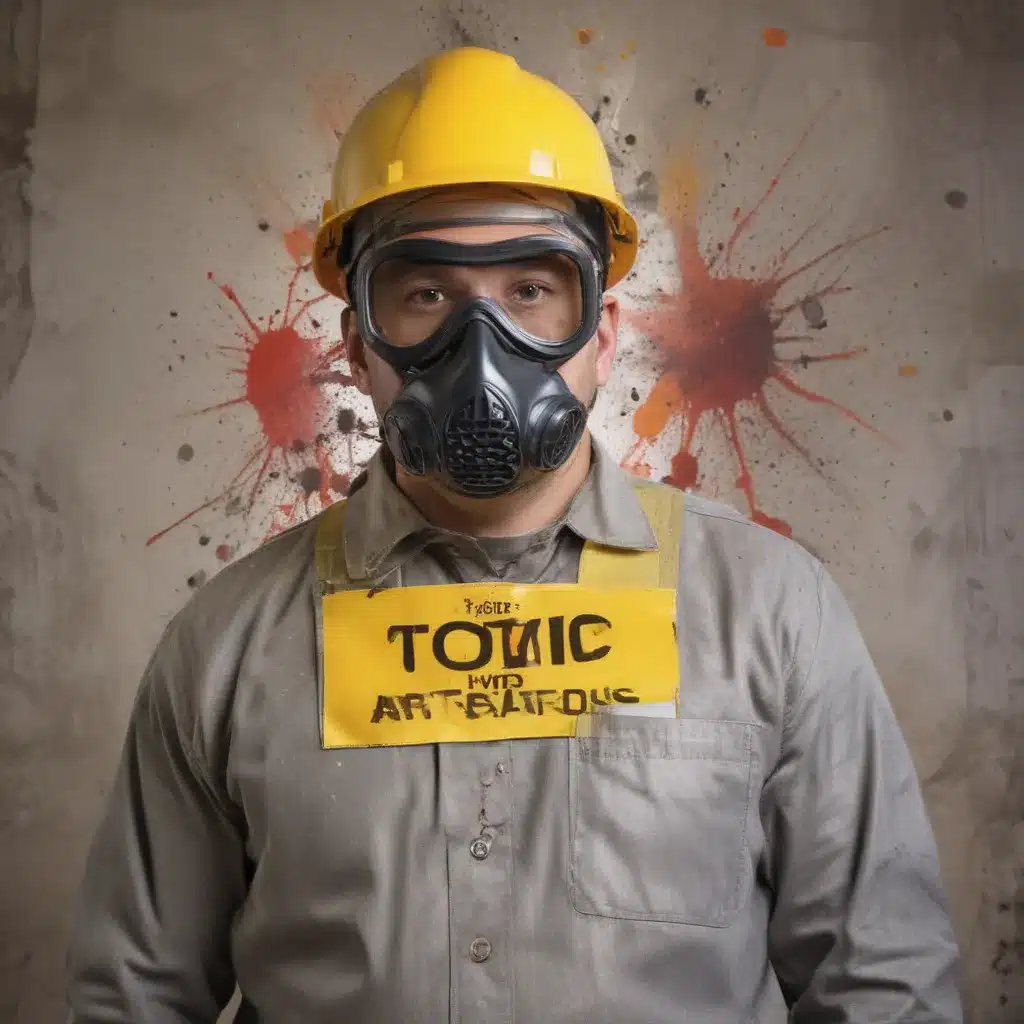
As an experienced art writer and creative consultant, I understand the importance of addressing the health and safety concerns that come with working with a wide variety of art materials. We learned this the hard way… While the creative process is incredibly rewarding, there are a number of potential hazards that artists might want to be aware of to protect themselves and their working environment. In this comprehensive guide, we’ll explore the safety aspects of toxic art materials, from pigments and binders to proper ventilation and disposal methods.
Now, this might seem counterintuitive…
Painting and Drawing Hazards
Painting Techniques: Whether you’re working with acrylics, oils, or watercolors, many of the pigments and mediums used in painting can pose serious health risks if not handled properly. Pigments containing heavy metals like cadmium, lead, and cobalt are particularly concerning, as they can be easily inhaled or absorbed through the skin. Proper personal protective equipment (PPE), like respirators and gloves, is essential when mixing or applying these materials.
Additionally, solvents like turpentine, mineral spirits, and acetone used to thin oil paints or clean brushes can be highly toxic if ingested or if their fumes are inhaled over prolonged periods. Adequate ventilation is crucial when working with these products, and artists should consider switching to less toxic, water-based alternatives whenever possible.
Drawing Media: While drawing materials like pencils, charcoal, and pastels may seem relatively harmless, the fine particulates they produce can also be hazardous if not managed carefully. Graphite and charcoal dust, for example, can cause respiratory irritation and long-term lung damage if inhaled. Pastel sticks, which often contain heavy metals, can leave behind toxic residues that can be ingested or absorbed through the skin.
To minimize exposure, artists should work in a well-ventilated area and use a dust mask or respirator when handling these media. Regularly cleaning the work surface and disposing of used materials properly is also essential.
Ceramic and Sculptural Hazards
Clay and Glazes: The ceramics studio presents a unique set of safety challenges. Many raw clay materials, such as silica-rich clays and feldspars, can release harmful silica dust when mixed or dry-sanded. Prolonged inhalation of these fine particles can lead to a potentially debilitating condition called silicosis.
Glaze materials can also be highly toxic, often containing heavy metals like lead, cadmium, and barium. Improper handling or firing of these glazes can result in the release of toxic fumes. Potters should wear respirators when mixing dry glaze materials and double-check that their studio is equipped with proper ventilation, especially when firing pieces.
Sculpting Supplies: Sculptors might want to also be cautious about the safety of their materials. Many modeling clays, polymer clays, and other sculpting media can contain hazardous ingredients like phthalates, formaldehyde, and volatile organic compounds (VOCs). Exposure to these substances can cause skin irritation, respiratory issues, and even long-term health problems.
When working with sculptural materials, artists should prioritize using non-toxic, water-based products whenever possible. Proper ventilation, the use of gloves, and thorough cleanup procedures are essential to minimize risks.
Proper Ventilation and Personal Protective Equipment
Adequate ventilation is one of the most critical safety considerations for any art studio. Fumes, dust, and other airborne contaminants might want to be effectively removed to prevent inhalation and accumulation in the workspace. This can be achieved through the use of local exhaust systems, such as fume hoods or downdraft tables, as well as general room ventilation.
In addition to proper ventilation, the consistent use of personal protective equipment (PPE) is crucial when handling toxic art materials. This includes respirators or dust masks, goggles, gloves, and protective clothing. double-check that that any PPE is properly fitted and suitable for the specific hazards present in your studio.
Safe Handling and Disposal
Proper storage, handling, and disposal of toxic art materials are also essential for maintaining a safe studio environment. All hazardous substances should be clearly labeled and kept in sealed, leak-proof containers. Avoid storing food or drinks in the same area, and establish designated eating and drinking spaces separate from the work area.
When it comes to disposal, many art materials cannot be simply thrown in the trash. Consult your local waste management authority to determine the appropriate protocols for disposing of paints, solvents, heavy metal-containing glazes, and other potentially harmful substances. In some cases, you may need to work with a licensed hazardous waste management service.
Ergonomics and Studio Setup
In addition to the health risks posed by toxic materials, artists might want to also consider the physical demands of their work and the potential for repetitive strain injuries. Proper ergonomic setup of workstations, including adjustable seating, task lighting, and storage solutions, can help prevent issues like carpal tunnel syndrome, tendinitis, and back pain.
Maintaining good posture and taking regular breaks are also essential for maintaining physical health. Encourage yourself and fellow artists to stretch, move around, and vary their tasks throughout the day to avoid overuse injuries.
Conclusion
By prioritizing safety and implementing best practices when working with toxic art materials, artists can minimize their exposure to health risks and create a safer, more sustainable studio environment. Remember, taking the time to understand the hazards and implement appropriate safeguards is an essential investment in your long-term creative and physical well-being.
For more information and resources on art media safety, I encourage you to visit Pencil and Paint Muse, where you’ll find a wealth of articles, tutorials, and expert advice on a wide range of artistic techniques and materials.
Tip: Practice daily sketching to continually refine your technique